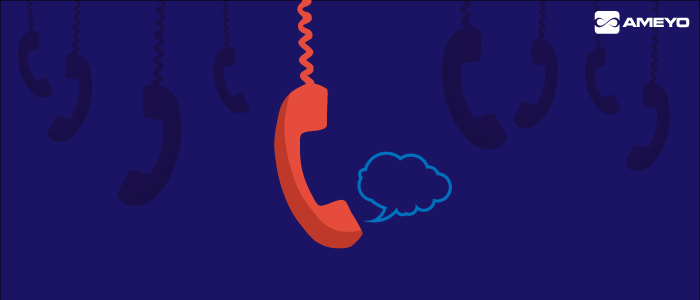An abandoned call is one where the caller hangs up the call while waiting for an agent. It usually happens because the caller gets frustrated with the time on hold. When a customer calls for customer service, their expectations are really high and this ultimately leads to call abandonment as they want the best treatment. They simply don’t wait on hold and therefore hang-up.
According to a survey from Velaro, nearly 60 percent of respondents believe that one-minute is too long to be on hold. In addition, 32.3 percent of consumers believe that customer service departments should be answering immediately – with no hold time.
As a call center grows, the number of calls received also increase and so does the hold times which in turn leads to increased abandoned rates. But as it has a damaging effect on customer retention and their lifetime value, it is indispensable for call centers to implement methods to reduce abandoned calls. Below I have listed 5 ways to decrease call-abandonment rates:
Increase your capacity by Hiring more Agents
Hiring more agents will definitely lower the hold time. But if a call center experiences call volume spikes occasionally, then hiring additional agents might lead to higher agent idle time at other times. However, if your call center witnesses high abandonment most of the times, then make sure you employ enough staff to reduce customer waiting time.
Utilize the newer agents for handling routine calls and consume the skilled-agents for tackling complex calls.
It is also essential to prioritize calls based on customer value. Don’t make your most valued customers wait and immediately route their calls to the most skilled agent available.
Give a Call-back Option to your Callers
Allow your customers to request a call-back as an alternative to waiting on hold. The customer would be immediately released from the waiting list and can be given a call back as soon as a suitable agent gets free. Replacing hold-time with a call back leads to higher first call resolution.
According to Forrester, “The option to hold their place in the queue and go on to do something else is highly appealing, with 75% stating a preference for it.”
Replace your Boring Welcome Message with something Informative and Relevant
Majority of the customers abandon the call after 20 seconds from when it gets connected. Probably your first automated message ends by this time. The reason is simple-they get frustrated listening to the boring and irritating message such as “your call is important to us” and “your call is currently being held in a queue due to unusually high call volumes”.
Try to replace these generic messages with something useful like their approximate waiting time. For example, the message could be “your call has been held in a queue and our agent will speak to you in the next 60 seconds”.
Offer Multiple Channels of Communication
Providing various channels of support other than a phone, would definitely lower the burden and reduce call abandonment. People are increasingly utilizing online and digital space for communication. Companies must adopt omni-channel communication to provide a consistent experience to their customers across channels. But the voice is still the highest used mode and hence call centers should be careful when taking resources away from voice channels to support other channels.
Change your “On-hold” Music
Research has shown that 71% of customers like to listen to music while they are on hold.
Your choice of music played at the time of hold could be causing the callers to hang up the phone. Check the analytics and see if maximum drop-offs occur after the music starts playing. If this is true, then consider replacing it with the customer’s choice of music. You can ask your customers for feedback about the on-hold music on Twitter and other social media sites. Based on their consensus, you can easily make the modifications by opting for the most liked song or music.


